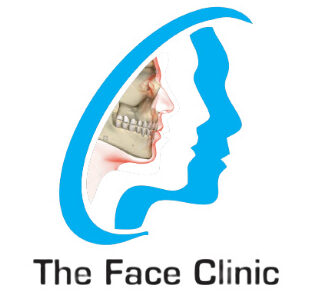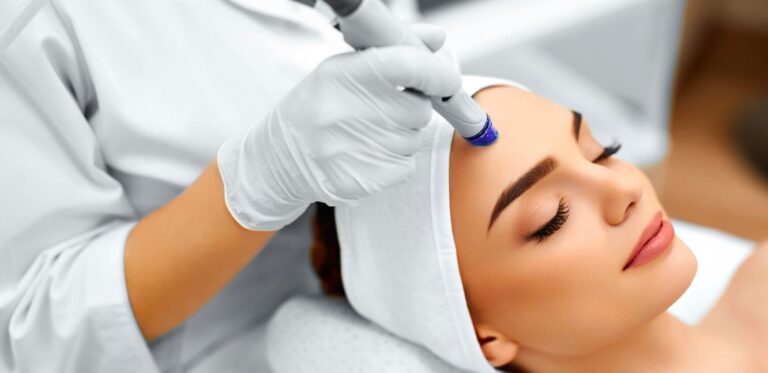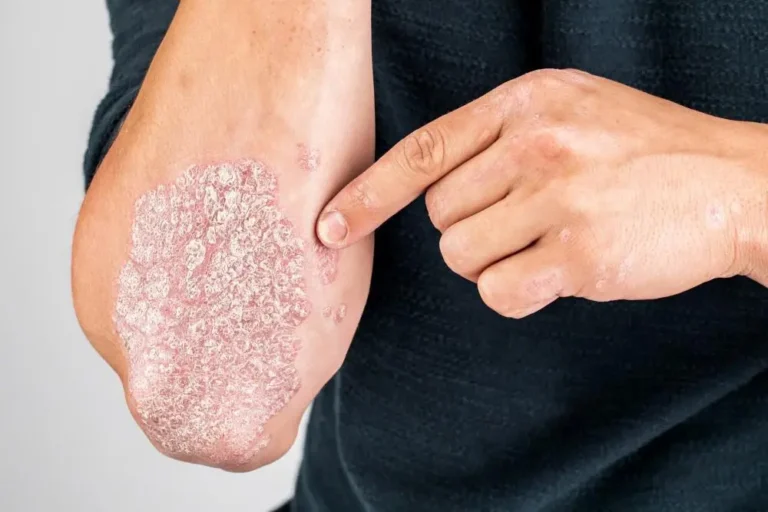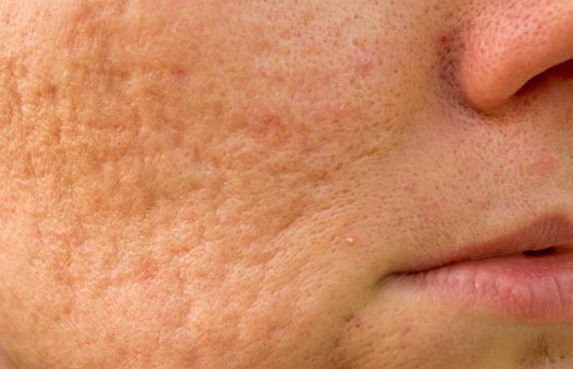Over the years, the skincare routine has evolved from mere cleansing and moisturizing to a comprehensive multi-step process. For skincare enthusiasts, it’s not just a mundane process of grabbing random products off the shelf but a whole alchemy where science blends with artistry. If you want to know more about what skincare routine steps should be followed and which product to choose, read with me till the end.
According to Cleveland Clinic, a basic skincare routine includes a cleanser, toner, serum, moisturizer, eye cream and sunscreen. All steps are discussed in detail below.
1. Cleanser
The first and most important step of any skincare routine is to remove all kinds of makeup, dirt and impurities from your face, for which a cleanser is used. A cleanser consists of a base (Water or Oil), a surfactant(which dissolves oil and sebum) and a binder to keep ingredients together.
Additionally, many other products like retinol, salicylic acid, niacinamide and fragrance are added to meet specific skin needs.
There are so many types of cleansers with varying proportions of ingredients but to simplify, the following are the two major categories.
Oil Cleansers: Natural oils or synthetic oil-based cleansers fall into this class. They are used in the first step of a double-cleansing routine as oil dissolves sebum, makeup and impurities very easily.
Oil-Free Cleansers: They usually contain glycerin and water micelles, have a gel-like texture and can be foamy or non-foamy in consistency. You can use them as a single step in your skincare routine or after using oil cleanser.
(Read about Hydrafacial– All your skincare steps in one procedure)
How to choose a cleanser?
Consider your skin type and the cleanser’s texture, formulation and active ingredients before buying.
- For dry and sensitive skin, use mild and gentle products. Hydrating cleansers with ceramides and hyaluronic acids are the best choice to restore skin moisture and repair the skin barrier.
- For oily and acne-prone skin, foaming cleansers with antibacterial agents are considered the best as they are good at deep cleaning and unclogging pores.
Pro tip: Try to avoid sulfate and fragrance-containing products. If your skin is sensitive, choose a cleanser with a neutral pH. Ensure that your cleanser is non-comedogenic and dermatologically approved.
(Book your appointment to learn more about your skincare routine.)
2. Toner:
A Toner is just like a savior for your skin after you are done with all the cleansing and washing. It is a water-based soothing solution that helps to neutralize the pH and make the skin look fresh and hydrated. That prepared and hydrated skin, in turn, makes it easier for the next products like serums and moisturizers to absorb and become more effective.
Here is what to look for when choosing a toner for you:
- Make sure its formula is gentle.
- It is alcohol-free.
The next step is to select according to your skin texture. If your skin feels dry after cleansing, find a gentle, hydrating cleanser with rosewater or aloe vera to add an extra layer of water. In contrast, for oily skin, mild astringents (like Alpha Hydroxy Acids or others) containing toners will help to control oil and remove blackheads.
3. Serum
After applying toner, the next step in your skincare routine is using a good serum. They are highly concentrated preparations of one or two active ingredients that address specific skin issues. Their thinner texture, as compared to creams or lotions, makes their application and absorption in the outermost skin layer easier. Consequently, it improves outcomes in terms of increasing hydration, removing blemishes, treating hyperpigmentation and reducing fine lines and wrinkles.
Here’s the guide on which serum to choose:
Hyaluronic acid: for hydration and glow
Vitamin C (Ascorbic acid): to clear dark spots, dullness, and hyperpigmentation, and enhance radiance.
Retinol: to combat signs of ageing like fine lines and wrinkles.
Salicylic Acid: to control excess oil and sebum production, eliminate black and whiteheads and reduce breakouts.
Peptides: to enhance skin’s elasticity and revitalize saggy skin.
Pro Tip: As serum contains active components, do not forget to do a quick spot test to see if it fits before applying it on your face.
4. Moisturizer:
The biggest reason your skin always looks dull is either your moisturizer is not suitable for your skin type or you don’t use it at all. It is a crucial step of any skincare routine. To define it, moisturizer is a substance that is applied on the skin to prevent dryness, increase hydration and keep the natural barrier intact. It can be a cream, gel or lotion in consistency.
The main ingredients of a good moisturizer are humectants(that increase hydration), occlusives(that make a protective layer over the skin) and emollients( which enhance smoothness).
Which moisturizer to add in your skincare routine according to your skin type?
Normal Skin: For normal or combination skin, a lightweight and nongreasy product that contains hyaluronic acid and ceramides are a good choice to maintain the balance of water and oil.
Dry skin: For dry or patchy skin, you might want to look for a thick, cream-based formulation or preferably an emollient.
Oily skin: A thin, gel-based formula that is rich in niacinamide, antioxidants and Alpha Hydroxy Acids will work better for oily skin. Not only it reduce the overproduction of sebum and close open pores, but also hydrates the skin at the same time.
Pro tip:
For younger people, lotions and lightweight products are sufficient as their skin has an adequate amount of moisture. With increasing age, ointments and creams are the better choice.
Things to remember: Choosing a moisturizer is not about following a hard and fast rule. Rather, with changing weather and skin conditions, you may switch between the products as needed.
(Read about Ultimate Guide to Laser Hair Removal)
5. Eye-Cream
As you start getting older, your eyes are the first things on your face that start showing signs of aging. Crow’s feet(wrinkles at the corners), puffiness and dark circles are almost always a concern for everyone over 25 years old. If you are facing any of these issues or are 25 years old or more, you might want to add an eye cream in your skincare routine.
Pro Tip: Consider choosing an eye cream that has peptides and retinol as the main ingredients. Avoid steroid-containing products and those with high fragrance and irritants.
6. Sunscreen
At the last step of your skincare routine, it is mandatory to put sunscreen on your face to protect your skin from harmful UV rays. According to the American Academy of Dermatology, skin cancer is one of the most common cancers worldwide. By using sunscreen daily, you can reduce the risk of the deadliest skin cancer (Melanoma) by almost 50%. Not only this, it also prevents early signs of aging.
There are two types of sunscreens.
- Physical sunscreens act like a shield or barrier against harmful radiation. Usually, they have zinc oxide or titanium dioxide.
- Chemical sunscreen produces chemical reactions and absorbs UV light before it can harm the underlying skin,
Pro Tip: Choose a sunscreen that is SPF 30 or more. The more the SPF, the better it is. As its efficacy lasts for 2-4 hours, do not forget to apply
Again.
6. Exfoliation
It is also a part of the skincare routine which should be performed twice weekly. Exfoliation means the removal of dead cells and debris from the uppermost layer of the skin to help it rejuvenate through a healing and recovery process that includes increased collagen production.
It is of two types:
- Scrubbing or physical exfoliation is the oldest form of it. In simple words, it means rubbing granular products on the skin directly. A wide range of products from scrubs to brushes and sponges is available everywhere in the market.
- Chemical Exfoliation uses Acid {like Alpha Hydroxy Acids or Beta Hydroxy Acids) or enzymes to dissolve dead cells and material. It is less harsh and suits well for sensitive skin.
Morning vs Night Skincare routine:
There are a few differences about what to apply in the morning and at night as morning skincare routine focuses more on protection of skin from sun while night skincare routine is mostly about hydration and nourishment.
Conclusion:
A proper five step skincare routine consisting of cleansing, exfoliating, toning, and moisturizing followed by sunblock application has proven to be effective in hydrating skin, enhancing its glow, and creating a youthful, plumpy appearance. However, remember that your skin is unique and there is no one-size-fits-all formula. Given that, It’s necessary to be more mindful about what you apply to your skin.
Good luck choosing your skincare routine!







3 Comments
Comments are closed.